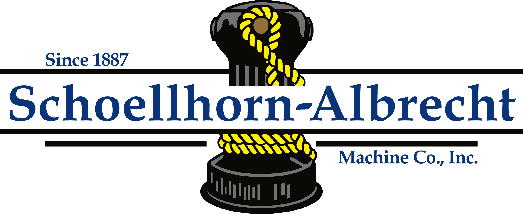Ship to Shore: How Two Companies Partnered to Make Pearl Harbor Operations More Efficient
Written for Machine Design magazine by Greg Schulte, President of Bonfiglioli USA
In the 1940's, Pearl Harbor played a pivotal role as the Pacific base of naval operations during World War II, following the December 7 attack on the base. Today, it holds an even more exalted role as a national historic landmark, hosting more than 2 million visitors annually at the USS Arizona memorial of the attack on Pearl Harbor.
Many, however, may be surprised to know that, Naval Station Pearl Harbor continues to be a vital part of the U.S. defense establishment and homeport of the U.S. Navy's Pacific fleet. As the U.S. Navy's busiest port, the base annually performs approximately 65,000 boat runs and transports approximately 2.4 million passengers and 200,000 vehicles. Services provided by the Naval Station Pearl Harbor include:
- Coordinating the logistics for home-ported and visiting military and civilian watercraft
- Organizing berthing assignments, magnetic silencing, and pier services
- Performing logistical support
- Scheduling ship movements
- Providing tug services as required
With such a large role to play both domestically and abroad, it is essential that every aspect of the Navy's operations run smoothly.
Early in 2009, the Navy decided to refurbish a large dry dock - still riddled with bullet holes from the 1941 attack. The dry dock, along with its capstans had greatly deteriorated during its 70+ years of service. Although these capstans were still responsible for pulling all manner of military and civilian vessels to the dry dock, they were no longer operating at peak efficiency and beyond repair.
The contractors for the U.S. Navy turned to Schoellhorn-Albrecht Machine Company to design and fabricate a total of 16 replacement capstans. Three of the capstans will be used in specially-outfitted area for demagnetizing, or "degaussing," submarines. The remaining 13 capstans will be placed dockside on a refurbished dry dock used in the Navy's operations.
"The U.S. Navy had very detailed specifications for the design and manufacture of the capstans to be used in the demagnetizing area at Pearl Harbor," explains John Richardson, sales and marketing manager for Schoellhorn-Albrecht. "They wanted 40-horsepower units capable of maneuvering a submarine as close to the dock as possible. Most important, they wanted their new capstans to get the job done, and still have an extra service factor if it's ever needed."
To accomplish that goal, Schoellhorn-Albrecht engineers tapped Bonfiglioli USA, one of the world's leading designers and manufacturers of gear motors, drive systems and planetary speed reducers. The company's speed reducers are extremely efficient compared to their competitors, according to Richardson, making them ideal for the Pearl Harbor capstan projects.
"Efficiency is a topic that comes up a lot in our business. As a manufacturer, it's critical to provide efficient solutions that position our company for new opportunities and make us more competitive," says Richardson. "Bonfiglioli helps us do that. Bonfiglioli's speed reducers are so efficient that we can achieve the Navy's specified amount of horsepower using a smaller motor. That's a win-win scenario."
For both the demagnetizing port and dry dock capstans, Schoellhorn-Albrecht and Bonfiglioli selected a planetary speed reducer. "In addition to being compact in size, the Bonfiglioli planetary speed reducer is extremely powerful. Each unit is ideal for severe duty applications where shock loadings and impacts are more the rule than the exception," Richardson asserts. "The product configuration is highly versatile, due to several options as far as mounting, gear layout, output shaft and motor interface."
The Bonfiglioli speed reducer has the added benefit of increasing the capstan's overall lifespan. Heaters in the electric motor will engage whenever the motor is activated to help dissipate condensation build-up. Schoellhorn-Albrecht has taken the additional step of adding synthetic lubricants to the speed reducers to improve load capacity and reducer efficiency.
"Each of these steps will ultimately preserve the longevity of each capstan and slow deterioration of its internal components," Richardson points out. "The life expectancy of each of these units is well over 20,000 hours of operation."
According to Richardson, the 13 capstans designated for dockside use are undergoing testing and audit by the U.S. Navy. They are expected to be installed in early 2010. The three capstans designed for the area in which submarines will be demagnetized are slated for completion and installation by mid-2010.

